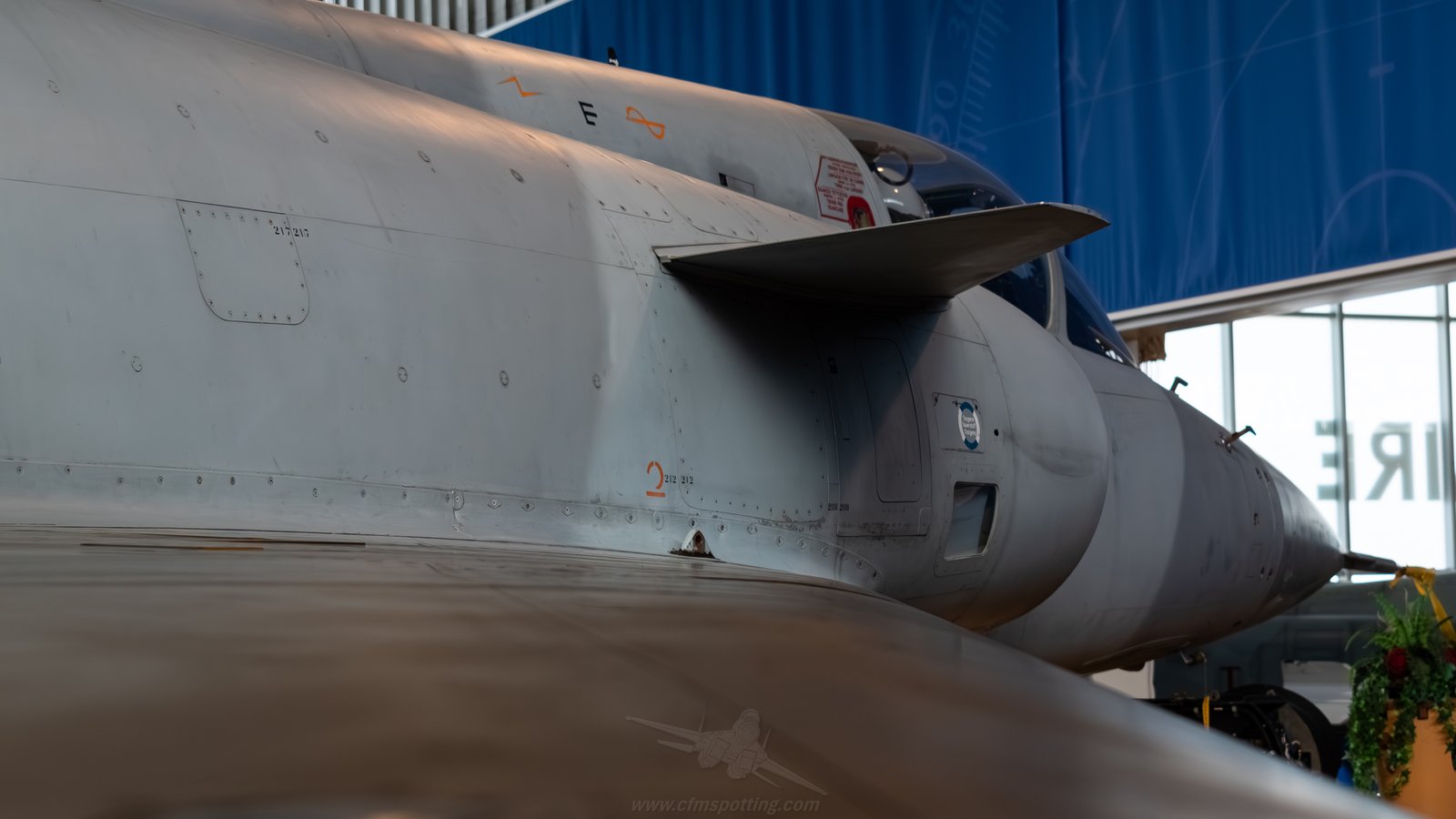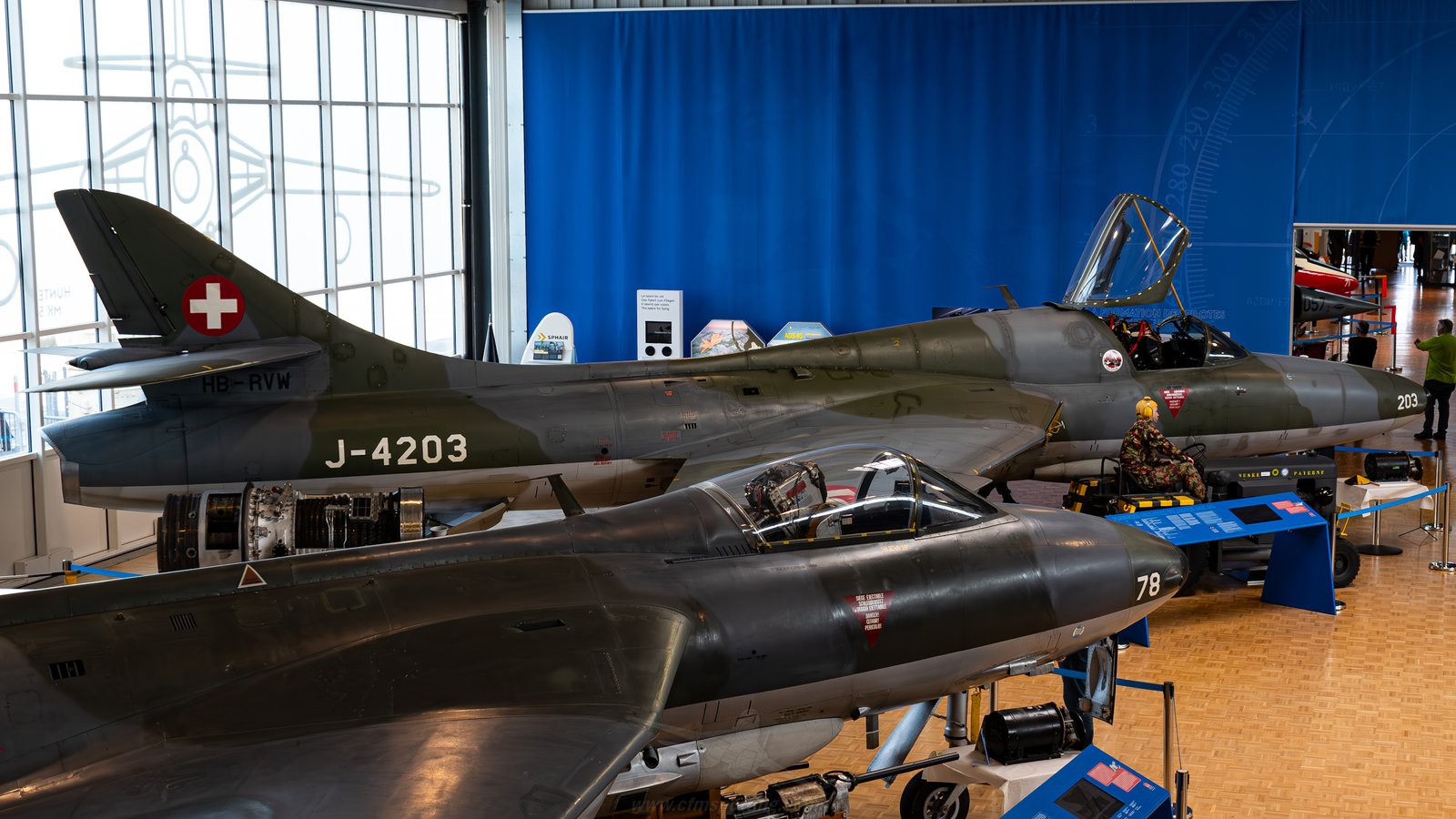Mirage III Final Flight - Payerne

About the event
HB-RDF, a Dassault Mirage IIIDS, was the world’s only privately operated Mirage III and a cherished symbol of Swiss aviation heritage. Originally serving the Swiss Air Force as J-2012 from 1983 until its retirement in 2003, the aircraft was acquired by the Clin d’Ailes Museum in 2005. After an extensive restoration, it returned to the skies in 2008 under its civilian registration, captivating audiences at airshows and offering exclusive passenger flights.
However, in 2023, the Swiss Federal Office of Civil Aviation declined to renew HB-RDF’s flight permit due to concerns over the aging engine and other critical components. This decision led to the cancellation of its flight activities, marking the end of 15 years of civilian-operated Mirage III flights in Europe. A special exemption allowed for two final farewell flights on May 25, 2023, after which HB-RDF was permanently grounded and placed on static display at the Clin d’Ailes Museum in Payerne, preserving its legacy for future generations.
We were lucky enough to participate to this exclusive and exotic farewell!
After a four-hour early morning drive through the stunning landscapes of the Italian and Swiss Alps, we arrived at the main VIP terminal at Payerne Airport. There, we could access the dedicated spotter/visitor terrace, opened by the Swiss Aeropole, which proved essential for such an event, offering perfect vantage points for capturing top-down photos.
The flying activities kicked off with several F-18C/D Hornets performing local sorties from the airbase. The Swiss Hornet Demo Team also took to the skies, delighting us with a high-speed pass followed by a graceful wing wave, which was genuinely appreciated by all.
In addition to the Hornets, both a Pilatus PC-6 and a PC-7 also flew, with the Porter demonstrating its impressive STOL capabilities, while the Astra showcased its incredible maneuverability.
After a few hours of action, it was time for the highlight of the day, the only airworthy Mirage III in the world. As we heard the sound of the aircraft’s startup sequence, all eyes turned to the museum hangar, where the legendary HB-RDF Mirage could be seen taxiing out moments later. The aircraft took off for its first flight of the day, soaring over the Swiss Alps for a sightseeing tour before returning to Payerne about 50 minutes later. Upon landing, the Mirage deployed its drag chute, offering us a fantastic opportunity to capture this unique braking method.
We then prepared for the second flight of the day, which was also to be the final flight for HB-RDF. As it took off for the last time, the Mirage toured various Swiss airbases, and upon its return to Payerne, we were treated to a special formation: apart from HB-RDF, four Swiss F-18s flying alongside a French Mirage 2000-5F, which had arrived from Base Aérienne 116 in Luxeuil-Saint-Sauveur. This was an unexpected and truly exciting surprise for all of us.
After the final landing, we moved to a new spot at the Clin d’Ailes Museum, where the farewell ceremony took place. The Mirage III was greeted with a traditional water salute, marking the end of an era. The aircraft then taxied in front of us and parked just outside the museum, allowing us to appreciate its beauty up close.
Afterward, we had the opportunity to explore the museum itself, which was open to the public for free during this special event. Inside, we were able to admire a variety of aircraft and technology from both the past and present of the Swiss Air Force, and even pick up some memorabilia to remember this unforgettable occasion.
Swiss Air Force: History
The Swiss Air Force was officially established in 1914, at the start of World War I, as Switzerland sought to maintain and defend its armed neutrality. Starting with a handful of civilian aircraft and volunteer pilots, it evolved into a structured military force capable of defending the nation’s airspace against intrusions. During World War II, despite its neutral stance, Switzerland’s air force engaged in defensive patrols to assert sovereignty. The real transformation, however, came during the Cold War, when the threat of large-scale conflict prompted Switzerland to adopt an unmatched strategy of resilience, decentralization, and secrecy.
To ensure survivability in the event of an attack, Switzerland developed a remarkable network of underground military installations. Many airbases, such as Meiringen and Alpnach, were built into mountains, complete with blast-proof hangars, retractable barriers, armored doors, and underground fuel and weapon depots. These hardened facilities could shelter entire squadrons, allowing aircraft to remain operational even under sustained attack. Some bunkers were so well-hidden that they were indistinguishable from the natural landscape, with camouflaged entrances and decoy structures.
One of the most unique aspects of Swiss defense planning is the continued use of highway strips as alternate runways. These autobahn exercises are still held today (with the latest being helf near Payerne AFB), showcasing the ability of Swiss fighter jets (originally the F-5 Tiger and F/A-18 Hornet, and soon the F-35A Lightning II) to take off and land on designated straight sections of national highways. These roadways are carefully maintained and designed with removable obstacles, and during exercises, mobile support units provide refueling, arming, and maintenance directly on-site. This strategy not only enhances operational flexibility, but also serves as a clear demonstration of Swiss preparedness and deterrence.
Despite its technical sophistication, the Swiss Air Force has faced significant economic challenges in recent years. Budget cuts and restructuring have led to the cancellation of the F/A-18 solo display and to the halt of all Patrouille Suisse aerobatic team exhibitions, an iconic symbol of Swiss aviation heritage. The beloved Axalp Airshow, held annually in the mountains near Meiringen and known for its live-fire demonstrations in a dramatic alpine setting, has also been suspended, citing logistical strain and cost concerns. These decisions have disappointed aviation enthusiasts and raised broader questions about the visibility and role of the armed forces in public life.
The Swiss Air Force operates a compact but highly capable fleet, precisely tailored to its role in airspace security, territorial defense, and civil protection. At the core of its combat fleet is the F/A-18C/D Hornet, introduced in the late 1990s and used for air policing, training, and interception missions. These aircraft are operated by Fliegerstaffel 11 from Meiringen Air Base. The Fliegergeschwader 13, which includes Fliegerstaffel 18, is based at Payerne Air Base, the largest and most modern military airfield in Switzerland, and also houses staffel 17, the other operational Hornet unit. Payerne is the primary hub for quick reaction alert (QRA) duties, with jets on standby 24/7 to intercept any unidentified or unauthorized aircraft entering Swiss airspace.
The Northrop F-5E/F Tiger II, while largely retired from frontline roles, continues to serve in training, aggressor, and air show duties, including with the iconic Patrouille Suisse aerobatic team. These aircraft are operated by Fliegerstaffel 6, 8, and 19, mainly out of Sion and Emmen Air Bases. Emmen also serves as a major center for technical maintenance, pilot training, and drone operations, and hosts the PC-21 advanced trainer aircraft, operated by Pilotenschule (Pilot School) and Fliegerstaffel 7, which is responsible for transitioning cadets to jet aircraft before they move on to Hornet training.
Rotary-wing assets form a vital part of the Swiss Air Force’s support and civil protection mission. The fleet includes the AS332 Super Puma, AS532 Cougar, and EC635, operated by Lufttransport Staffel 6 and Lufttransport Staffel 8. These helicopters are based at Alpnach, Dübendorf, and Locarno, and are regularly deployed for troop transport, search and rescue, disaster response, and aerial firefighting missions, often in coordination with Swiss civil services and international agencies.
Looking towards the future, Switzerland will begin introducing the F-35A Lightning II, with Payerne, Meiringen, and Emmen prepared to host the new aircraft as they gradually replace the Hornet fleet. Despite its small size, the Swiss Air Force remains one of the most resilient, innovative, and efficient military aviation forces in the world, rooted in alpine geography, neutrality, and a doctrine of decentralized defense.

Dassault Mirage III: History
Developed by the french aerospace company Dassault Aviation during the late 1950s, the Mirage III was the first European aircraft to break the Mach 2 speed barrier. It first flew on November 17th 1956, and entered service with the French Air Force in 1961.
It was designed as a multirole aircraft, capable of both air-to-air and air-to-ground missions, being able to carry an array of different weapons.
On the A/G side, the Mirage III could carry SAMP Type 21 (400KG) and Type 25 (250KG) unguided bombs, SNEB Type 23 (5KG) and FZ49 (8KG) unguided rockets, AS-30 MCLOS Nord (520KG), and in some cases even a AN-52 Nuclear Bomb (Carried by Armée de l’Air Mirage IIIEs).
As for the A/A capabilities, Matra R511 and R530 (SARH) radar missiles were used for BVR engagements, while Matra R550s and AIM-9B Sidewinders (In use with the Australian and South African Mirages) IR Missiles were used for shorter range engagements.
The Mirage IIIE became the backbone of several air forces during the Cold War, with 1422 units being produced and exported to UAE, Argentina, Australia, Belgium, Brazil, Chile, Colombia, Congo, Ecuador, Egypt, Gabon, Israel, Lebanon, Libya, Pakistan, Peru, South Africa, Spain, Switzerland and Venezuela.
It saw combat during the Six-Day War, Yom Kippur War, War of Attrition, Indo-Pakistani War, Operation Desert Storm and South African Border War. Notably, Pakistan continues to operate upgraded variants of the Mirage III, keeping this legendary aircraft in active service even today.

Clin d'Ailes Museum
The Clin d’Ailes Museum is the official museum of the Swiss Air Force and a must-visit destination for aviation enthusiasts. Opened in 2003, the museum offers a detailed look at the history and evolution of Swiss military aviation. Its collection includes beautifully preserved aircraft such as the Dassault Mirage III, de Havilland Vampire, Venom, Hunter, and F-5 Tiger II, along with a fully functional Mirage III flight simulator open to the public. Visitors can also explore an impressive array of uniforms, equipment, and Cold War-era memorabilia, all housed in a modern facility adjacent to the Payerne’s air base itself. Run by passionate volunteers and veterans, the Clin d’Ailes Museum offers not just static displays but also special events and access to the nearby runway during dedicated spotter days, where military jets are often seen in action. After all, it’s a truly immersive dive into the past and present of the Swiss Air Force.

Wrap Up
HB-RDF’s farewell was definitely an event and opportunity which will of course be missed, but always remembered of. We thank the Swiss Air Force, the Clin d’Ailes museum and the entire staff at Payerne Airport, for allowing this incredible opportunity for us and for other various photographers from all around Europe!
If Payerne will decide to organise any spotter days in the future, we will definitely be there, so that we can also say hi to HB-RDF, in its new home!
“Merci, Danke, Grazie and Engraziel fetg” for taking the time to read our article!
Gallery
Article by Christian Bossi – Pictures by Christian Bossi.


























